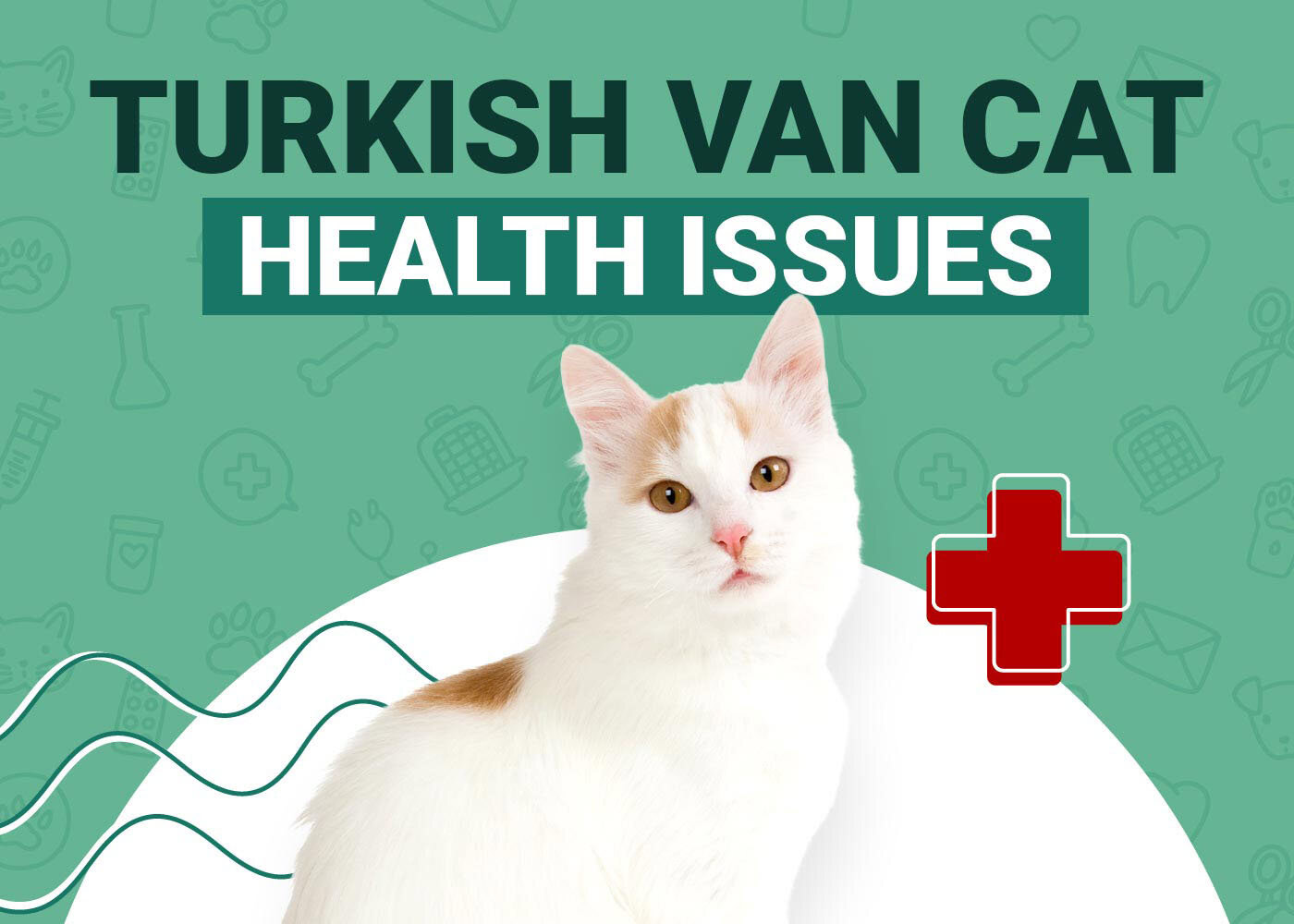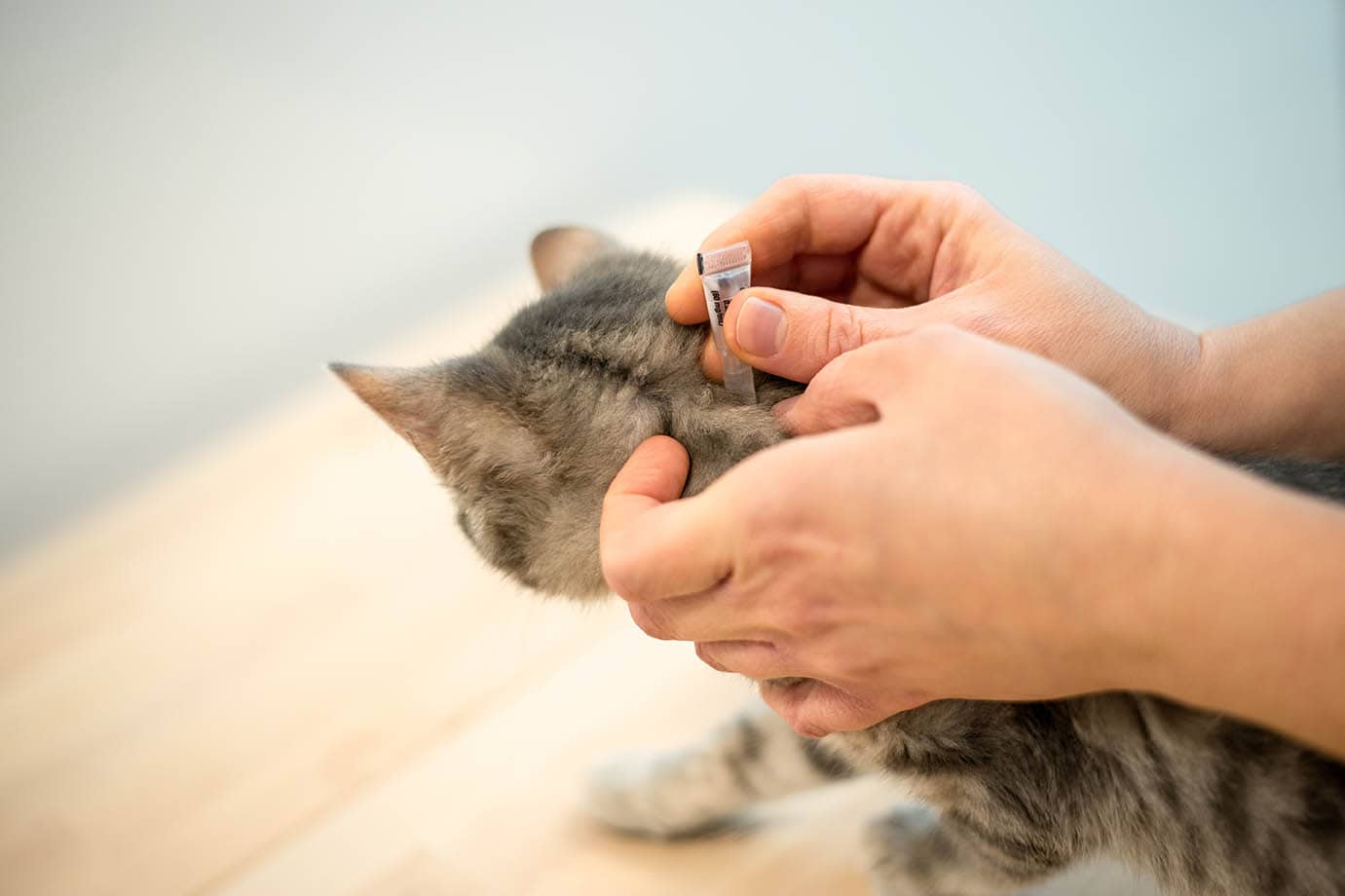VET APPROVED

The information is current and up-to-date in accordance with the latest veterinarian research.
Learn more »The Turkish Van cat is a rare breed originating in Turkey. These loveable felines are physically active and enjoy spending time with their humans. Their unique cashmere-like coat is typically white with a darker ring-patterned tail, a matching dark-colored marking on the head, and a similar dark mark sometimes appears between the shoulder blades. Turkish Vans loves to immerse themselves in water and will happily swim for a long time. The Turkish Van is also known for their distinctive eyes, which are usually amber colored, blue, or sometimes one colored eye of each hue. While this unique and rare breed isn’t known for any genetic health problems, there are a few common concerns to watch out for if you’re planning on bringing home a Turkish Van.

The 5 Common Health Problems of Turkish Van Cats
1. Hypertrophic Cardiomyopathy
Hypertrophic Cardiomyopathy (HCM) is the most common heart disease in cats, including the Turkish Van breed. It is a genetic condition where the walls of the left ventricle thicken, reducing the heart’s ability to pump blood efficiently. Over time, this can lead to congestive heart failure, blood clots (thromboembolism), or sudden cardiac arrest. HCM can develop at any age, but it is often diagnosed in middle-aged to older cats. While the exact genetic mutations responsible for HCM in Turkish Vans are not fully understood, the disease has a hereditary component in many cat breeds.
Affected Turkish Van cats will not show any obvious signs of the disease, which is why it is important to keep up with routine veterinary checks at least once a year. As the disease progresses, you may notice the following signs:
- Rapid breathing
- Difficulty breathing
- Lethargy
- Weakness
- Collapse
While there is no cure for this condition, early diagnosis allows its management with medication to delay disease progression, lower the blood pressure, reduce the signs, and prevent fluid buildup in the chest cavity, allowing cats to enjoy a better quality of life for a longer time. Before purchasing a Turkish Van Cat, it is recommended to request the genetic screening of the parents.
2. Congenital Deafness
Congenital deafness in Turkish Van cats is primarily linked to the dominant white gene (W), which is responsible for their beautiful white coats. This gene affects the development of the inner ear, leading to degeneration of the cochlea, the part of the ear responsible for detecting sound. Deafness is most commonly observed in white-coated cats with blue eyes, as the same genetic factors that cause blue eye pigmentation are associated with hearing loss. However, not all white Turkish Vans with blue eyes are deaf; some may have normal hearing or be deaf in only one ear (unilateral deafness). Cats with one blue eye (odd-eyed) may also be more likely to have hearing loss on the same side as the blue eye.
Deaf cats often compensate well by relying on their other senses, but they may be more prone to startling easily and may have difficulty responding to verbal cues. However, deaf cats can live a long and happy life; especially if the owners modify their behavior to allow cats to be aware of their presence and make some adjustments to communicate with them through visual and tactile stimuli rather than words or other sounds.
Responsible breeding practices, such as avoiding mating two white-coated cats with blue eyes, can help reduce the risk of congenital deafness in Turkish Vans.
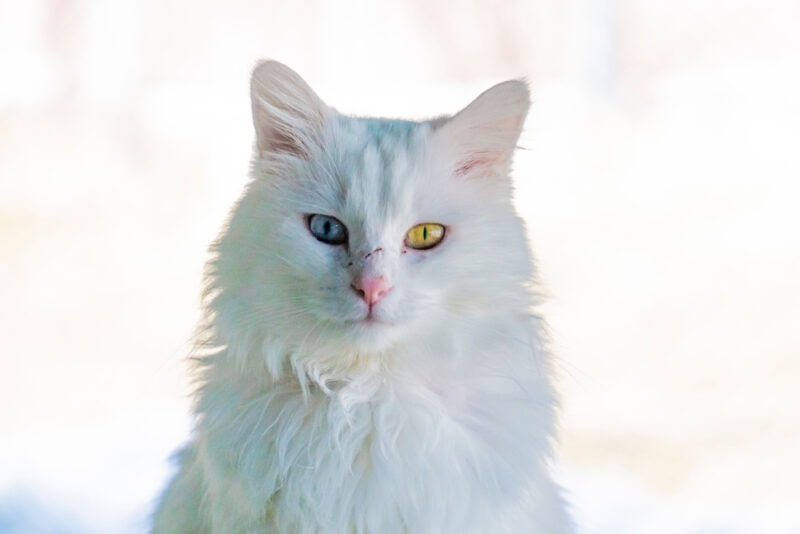
3. Obesity
Turkish Van cats tend to be a healthy breed overall, but weight management is just as important for this breed as many other cat breeds. The Turkish Van is a sturdy, muscular breed that is often larger than the average house cat. Females tend to weigh between 9 to 13 pounds, while males weigh in at 11 to 18 pounds. Obesity can put your cat at increased risk for arthritis, fatty liver, diabetes, and other health issues. To help prevent obesity in your Turkish Van, watch their food intake and encourage exercise. Choose an appropriate food for your cat and follow the directions on the bag so you don’t overfeed your pet. If your cat is struggling with weight, contact your vet to determine if there are underlying health conditions that could be causing weight gain. Your vet may also prescribe your cat a special diet to help them lose weight.
Exercise can be encouraged by purchasing cat tunnels and towers, which help your cat engage in playing, chasing, and climbing. Other activities that keep your cat active could include motorized cat toys, swimming (since the Van is a water lover), or the old crinkled paper tied to the end of a piece of string attached to a stick. You might also consider getting your Van a friend if you have the space for another pet.
4. Diabetes
- Lethargy and/or weakness
- Increased thirst
- Increased frequency and volume of urination
- Weight loss (despite continued eating)
- Loss of muscle
- Plantigrade stance
- Reduced coat quality (dandruff or oily coat)
- Vomiting and dehydration
The Turkish Van is typically a healthy cat but since they have a predisposition for obesity, overweight cats have a predisposition to develop diabetes. The most common form of diabetes for cats is type II diabetes mellitus, which is also known as non-insulin-dependent or insulin-resistant diabetes. Type II usually results in a relative insulin deficiency, which means the pancreas produces insulin, but the tissues aren’t able to use it to metabolize glucose adequately.
Besides obesity, other common risk factors for type II diabetes mellitus include increased age of the cat, absence of physical activity, sex (indoor male cats are more frequently diagnosed), and steroid therapy.
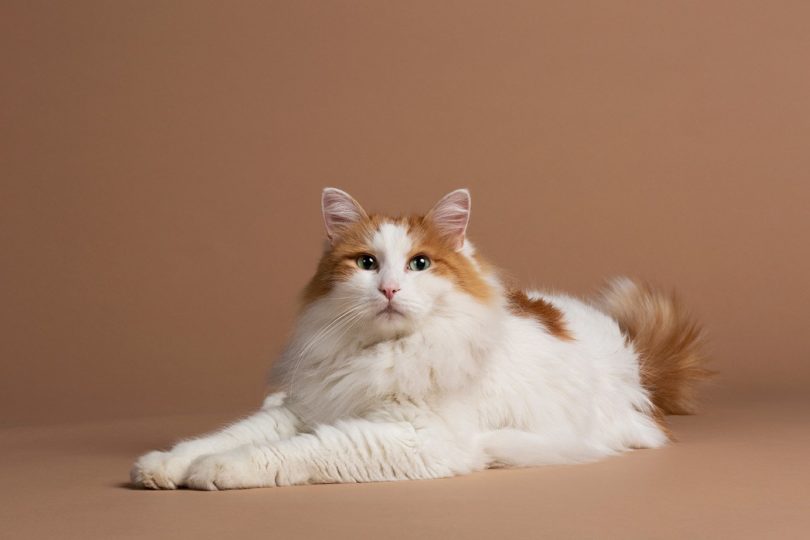
5. Ear Infections
- Excessive earwax
- Strong ear odor
- Ear discharge
- Inflammation or redness in and around the ear
- Ear mites (seen as black specks)
Ear infections can affect any age or breed of cat, including the Turkish Van. Cats with diabetes, allergies, or illnesses that cause weakened immune systems are more likely to get ear infections. The good news is that ear infections are easy to treat if caught early, so it will be important to pay attention to your cat’s behavior. If they are shaking their head rapidly and often, pawing at and around their ears, tipping their head to one side, or constantly rubbing their ear against surfaces, your cat may have an ear infection. Reach out to your vet immediately for treatment if you suspect an ear infection so your cat can be treated before balance issues or hearing loss occurs.
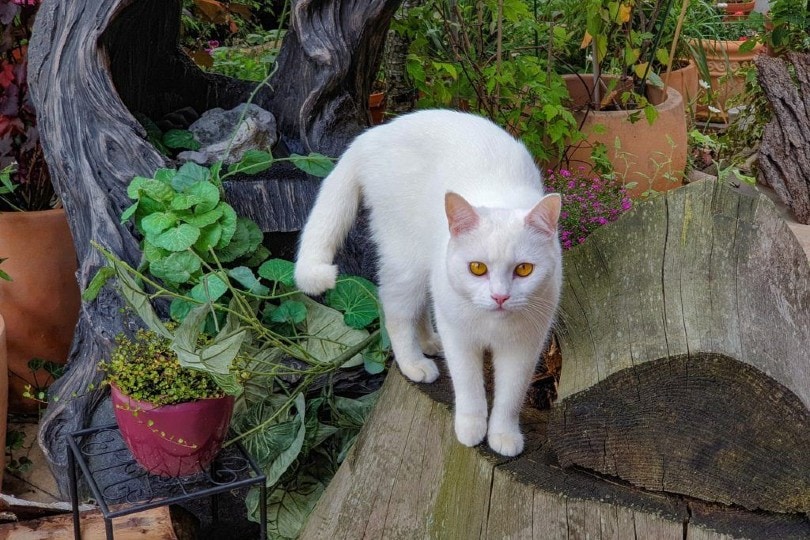

Final Thoughts
The Turkish Van cat is known for being a loveable and friendly breed. This rare cat is not known to have any major genetic health issues but can be susceptible to some of the same common health ailments as other felines. Obesity and diabetes are issues that can be prevented by a healthy diet and plenty of exercise. Ear infections are a common ailment among felines but can be treated successfully if caught early. Your Turkish Van is likely to live a long and healthy life if you maintain their weight, encourage exercise, and get regular vet checkups.
- https://www.petmd.com/cat/conditions/digestive/c_ct_obesity
- https://www.petmd.com/cat/conditions/endocrine/c_ct_diabetes_mellitus
- https://www.petmd.com/cat/conditions/endocrine/c_ct_hepatomegaly
- https://www.petmd.com/cat/conditions/digestive/c_ct_hepatic_lipidosis
- https://www.aspcapetinsurance.com/resources/cat-upper-respiratory-infection/
- https://www.petmd.com/cat/breeds/c_ct_turkish_van
- https://www.hillspet.com/cat-care/cat-breeds/turkish-van
- https://www.aspcapetinsurance.com/resources/ear-infections-in-cats/
Featured Image Credit: Gabriele M. Reinhardt, Pixabay
